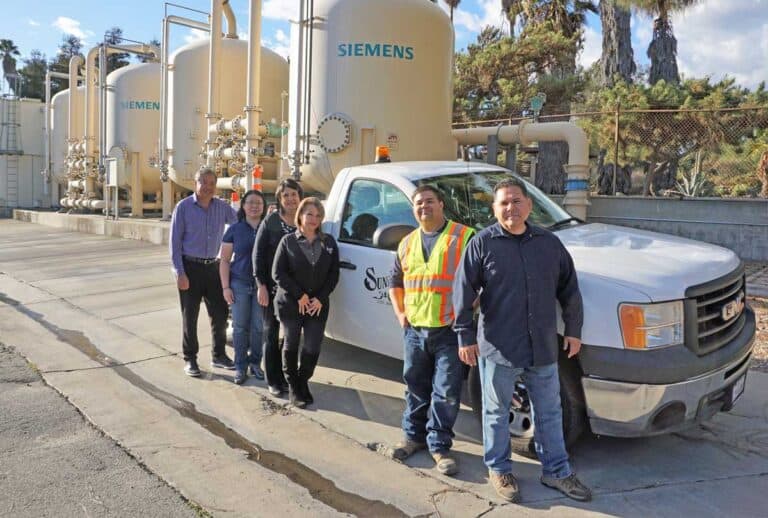Water Finance & Management
Across the country, water suppliers are discovering harmful contaminants in their water source and facing the question of how to pay for cleanup. While the supplier, the contaminant and the impacted community vary from case to case, one solution has proved effective across the board: make manufacturers pay for the costly treatment instead of ratepayers in the community itself. Sunny Slope Water Company, a mutual water company in Pasadena, California, used this strategy and was able to fully recoup the costs needed to serve clean water to more than 25,000 residents in the greater Los Angeles area.
Sunny Slope, which relies 100% on groundwater pumped from five wells, was unable to use two of these wells after it discovered dangerously high levels of 1,2,3,-Trichloropropane (TCP) – a toxic and carcinogenic chemical – during routine testing. Because the State of California bans this chemical in drinking water except at very low concentrations, Sunny Slope was required by law to take action.
Ken Tcheng became Sunny Slope’s General Manager in 2008, shortly after the contamination was detected. He faced two significant challenges: finding water sources to meet the demands of the growing population in the mostly residential service area, and finding the funds to treat the contaminated wells. Tcheng knew he had to explore all options to avoid passing on the costs of clean up to his customers.
Tcheng and his team at Sunny Slope explored upgrading a pipe from a distant well decommissioned due to nitrate contamination. They also considered pursuing a grant to install a liquid-phase granular activated carbon (LGAC) system, a kind of oversized Brita system, to remove the contaminants from the two impacted and inoperable wells. Sunny Slope determined that the LGAC, despite its more than $2 million price tag, was the best path forward, since it provided a long-term solution to return water quality to acceptable standards.
In 2010, the water company secured a $1 million grant to cover some of the costs of implementing the LGAC system, which eliminates pesticides, nitrates, hydrogen sulfide, and volatile organic chemicals from the drinking water. The grant was sufficient to cover part of the installation, but the system was estimated to cost millions more in maintenance and operation over the decades TCP was expected to remain in the wells.
Tcheng believed strongly that the polluters should bear the responsibility for these remaining costs. He turned to SL Environmental Law Group (SL), a legal firm that exclusively represents states, municipalities, and water systems facing water contamination issues, to identify the source of the contamination.
“When SL Environmental took on the case we saw real progress,” Tcheng said. “We are such a small company, so it was very helpful to have the firm’s knowledge and leadership. They moved on the case quickly and guided us through the process.”
SL pushed forward with Sunny Slope’s lawsuit, accusing two corporate oil producers of knowingly polluting its groundwater by manufacturing and selling pesticides contaminated with TCP. Further, the lawsuit alleged, the companies failed to take action to remove or substantially reduce the concentrations of TCP in the products, or to provide warnings of the risk that using the products as directed could result in groundwater contamination.
In 2021, Sunny Slope reached a settlement with the companies that were responsible for the contamination. Terms of the settlement were confidential, but Tcheng said, “the settlement allowed the water company to fully recover the cleanup costs and reimburse the Upper District for the grant that helped pay for remediating the contaminated well.”
Water companies like Sunny Slope are increasingly […]
Full article: Sunny Slope Water Company Shifts Contamination Costs to Polluters – Water Finance & Management

